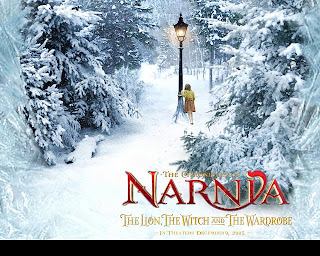 |
| Lovely poster from Opera Lyon's 2001 Production of Dvořák's Rusalka |
Note: There's LOTS of "linky goodness" in this post, especially good for those who love Russian tales like I do, so go explore and fill your fairy tale soul today. :)
Also: Stars like this: * indicate a corresponding additional note at the bottom of the page.
UPDATE/CORRECTION 12/28/11: Božena Němcová was Czech, not Russian. Thank you to Janu Banu who commented with the correction and Judika who emailed me as well. My sincere apologies! Being mistaken for English and other nationalities myself all the time, I'm embarrassed I rushed finishing my post without double checking - and correcting! - all my facts before going live. Thank you again Janu and Judika for reading and for caring enough to let me know and correct the post. :)
There is a fairy tale opera scored by famous composer Czech Antonin
Dvořák (in 1899) that has recently made a comeback in operatic circles and in
February 2012, UBC (University of British Columbia) will be mounting their own beautifully lavish production.
From the UBC promotional copy:
In Dvořák’s version, Rusalka is a water sprite that dwells in a lake. Rusalka has fallen in love with a mortal, a Prince who comes to the forest to swim in the lake. Since she is invisible to the Prince, she desires to take on human form in order to leave the cool waters and live in the sunlight with him. Rusalka’s father, the wise ruler of the lake’s underwater realm, warns her against such a transformation. Despite her father’s warnings, she seeks out the witch, Jezibaba, to fulfill her wish.
 |
| Renee Fleming during a performance of Rusalka by the NY Met |
Rusalka’s desperate longing to experience true love plunges her into an emotional storm heightened beautifully by majestic melodies, including the famously stunning aria, Song to the Moon. In the end, she must choose to make the ultimate sacrifice for love. Rusalka is not only Dvořák’s finest and most enduringly popular opera but also one of the most deeply moving operas of all.
There is, however, a point of confusion here. The opera has been officially called "
Rusalka: The Little Mermaid Story" and the apparent background for it (from the promotional copy) is this:
Rusalka is based on the original Slavic fairy tale of the Little Mermaid. The story was later adapted by Hans Christian Andersen and then by Walt Disney Studios into the 1989 film.
The problem here is that a
rusalka is NOT a mermaid and should never be confused with one. There
are similarities, such as rusalki (plural) are female water beings (or demons, since their agenda is usually seducing and drowning boys and men) which at first seem to have a lot in common with sirens, though they don't have fish/water animal tails.
Rusalki are actually a type of ghost (ie. they used to be human) and the water-version of
willis (another Slavic fairy/spirit seen in the story
Giselle, the popular ballet first performed in 1841****). Willis and rusalki are essentially both female ghosts looking for revenge specifically against the men who did them wrong in life, though any man is considered fair game. Rusalka are not completely malicious though. They can find peace and stop their haunting once justice (or revenge) is carried out on their behalf.
 |
| From an Australian production of Rusalka |
Andersen's Little Mermaid story (first published in 1837), however, is a lot closer to
Undine* (or
Ondine), than the beings of slavic folklore.

I just looked up Heidi's research on Andersen's
Little Mermaid at SurLaLune and she notes this:
While The Little Mermaid contains common fairy tale and folklore elements, especially those about mermaids, this fairy tale is the literary creation of Hans Christian Andersen. The tale has no direct oral predecessor in folklore.
The closest percursor of the tale is Undine, a story by Friedrich de La Motte Fouque***. Andersen admits to his familiarity and consideration of Undine while writing his Little Mermaid. In many ways, his tale is a direct reaction to the earlier story.
You can read even more on the tale with annotations and many more goodies on
The Little Mermaid at
SurLaLune with this in mind - in fact, please do!

This gives me stronger footing to be skeptical of this opera's claim on Andersen as in all my reading on Hans Christian Andersen I'd never seen reference to him adapting a rusalka story into
The Little Mermaid.
But that doesn't mean
Rusalka (by
Dvořák) isn't worth seeing/listening to. On the contrary!
Wikipedia states this:
The Czech libretto (for Dvořák's "Rusalka") was written by the poet Jaroslav Kvapil[1] (1868–1950) based on the fairy tales of Karel Jaromír Erben and Božena Němcová.
You can find a synopsis of the story the opera uses
HERE and you can learn a little more about one of the fairy tale collectors,
Božena Němcová, whose work the libretto was based on
HERE. (This is something new to me: a female
Russian Czech fairy tale writer and collator/collector from the early 1800's. I have to go find my
Russian Slavic fairy tale books and see if her name is on any of them. Considering her list of published works, I'm betting "yes".)
See? Fairy tales and Russian tales and Slovak folklore and legends. :) There are a lot of other elements for fairy tale people to enjoy in this opera too - the story, the costumes and the beautiful score, which includes the famous aria "
Song to the Moon". (The link takes you to YouTube where you can hear Sarah Brightman sing a beautiful Italian version of it "
La Luna"- I suggest ignoring the visuals for the video though - just listen.)
 |
| Bavarian State Opera 2011 version of Rusalka |
For a completely different variation on the theme how about this one presented at the Munich Opera Festival this past July, which features a girl in a fish tank? This version has been updated and interestingly twisted in the retelling, causing quite the stir. Rather than distract further from the current post I'll just let you find out for yourself if your interested. The link is
HERE.
 |
| NY Met production of Rusalka |
Dvořák's Rusalka is one of the more romantic stories I've seen involving a rusalka. Usually they're a little more blood thirsty and dark but the emphasis here is definitely more toward "girl from one world seeks to be with her love from another", rather like some selkies (though not all), swan maidens and, yes, little mermaids.
 |
| Opera appears both recent and Russian - source HERE |
I have a feeling that although there was some influence between writers and artists at the time, it doesn't seem to account for all the various being produced in different places. It's one of the reasons I've put in so many of the connected dates for various works - to see if you can "unriddle this riddle" a little yourself. Looking at the timeline is very interesting. Perhaps it's a case of "1800's fairy tale zeitgeist" specifically centered on tragic rusalka figures and other water beings such as mermaids. Considering what we're seeing happening in 2011 and 2012 in TV and movies (and even more specifically with Snow White), I wouldn't be at all surprised.
 |
| This is not an illustration. It's a "still frame capture" from the 1998 Oscar nominated animated short film "Rusalka", detailed below. |
There is one other important related video I'd like to bring to your attention and that's the 1997 gorgeously done animation of
Aleksandr Petrov using an incredible (and almost unbelievable!) technique of oil paints on glass for his separate images. The story is based on a work by
Alexander Pushkin from 1819 (it is thought - Pushkin wrote two different Rusalka poems**) and the title is simply "
Русалка" or "
Rusalka", though it's been mistranslated as "
Mermaid" in many places and is completely mesmerizing. It's easy to see why this short had an Oscar nomination in 1998.
There is a wonderful and in-depth blog post
HERE about Aleksandr Petrov's film and about rusalki which I highly recommend. It includes Pushkin's poem and explains things in a very easy-to-read manner.
Performances of the UBC production Rusalka begin on February 9th, 2012 at the Chan Center for Performing Arts in Vancouver. You can find more information about it and the artists involved
HERE.
*Which was beautifully illustrated by Sir Arthur Rackham. Some of my favorite fairy tale illustrations of all time are Rackham's Undine drawings. Today's bonus: a video of Rackham's Undine drawings, including the cover of the book. Enjoy.
** Pushkin's second but unfinished poem bears a strong resemblance to the opera which is the subject of today's post.
*** Undine, a story by Friedrich de La Motte Fouque is from 1811. **** The ballet Giselle debuted in 1841 and was based on at least two other works: De l'Allemagne by Heine, written in 1833 and Victor Hugo's Orientales published in 1829).























































